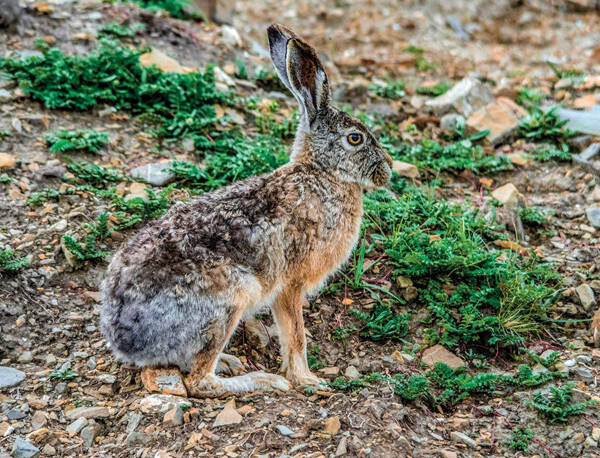
Ladakh pika
Ladakh pika
The taxonomic status of the Ladakh pika is relatively stable. However, due t···

Lepus yarkandensis
Lepus yarkandensis, South Xinjiang rabbit, hare, Shache rabbit
The classification status of the Tarim rabbit is stable, but there is a lot ···

Lepus tolai
Lepus tolai,Hare, Central Asian rabbit, Steppe rabbit
Mongolian rabbits are active both day and night, but are most active at dusk···

Lepus timidus
Lepus timidus,White rabbit, color-changing rabbit, blue rabbit
The snow hare is the earliest rabbit species to be named. The species classi···

Lepus tibetanus
Lepus tibetanus,Tibetan hare, Tibetan hare, desert hare
The classification status of the Tibetan rabbit is very confusing. It was no···

Lepus sinensis
Lepus sinensis,Mountain rabbit, short-eared rabbit, woolly rabbit, hare
The classification of South China rabbit is somewhat controversial. The Kore···

Lepus oiostolus
Lepus oiostolus,Gray-tailed rabbit, Fluffy rabbit
Plateau rabbits are herbivorous animals. In agricultural areas, they feed on···

Lepus mandshuricus
Lepus mandshuricus,Grass rabbit, mountain rabbit, black rabbit, mountain jump
This species is controversial in classification. It was once considered to b···

Lepus oiostolus
Lepus oiostolus,Southwest rabbit, Yunnan rabbit
In the past, Yunnan rabbits were long considered a subspecies of the plateau···

Ochotona coreana
Ochotona coreana
The Changbai Mountain pika belongs to the <Pika> subgenus. It has a na···

Ochotona pallasi
Ochotona pallasi,Daurian pika, Pascal's pika, rabbit mouse, rabbit, crying rabbit, Mongolian pika, Daurian pika, Mongolian pika
The Mongolian pika belongs to the subgenus <Pika>, and its classificat···

Ochotona mantchurica
Ochotona mantchurica
The Manchurian pika belongs to the subgenus <Pika>, and its classifica···

Ochotona alpina
Ochotona alpina
The Alpine Pika belongs to the subgenus <Pika>, and its taxonomic stat···

Ochotona roylei
Ochotona roylei
The gray mouse rabbit belongs to the subgenus <Conothoa>, and its spec···

Ochotona macrotis
Ochotona macrotis,Steppe pika, Mongolian pika, Dauri rabbit, Pika, Singing mouse, Moss
The big-eared mouse rabbit belongs to the subgenus <Conothoa> and is a···

Ochotona koslowi
Ochotona koslowi,Ochotonus
The Kochia pika belongs to the subgenus <Conothoa> and is very rare. I···

Ochotona himalayana
Ochotona himalayana
The Himalayan pika belongs to the subgenus <Conothoa>. The species was···

Ochotona forresti
Ochotona forresti,Yunnan pika, gray-necked pika
The gray-necked pika belongs to the subgenus <Conothoa>. The classific···

Ochotona gloveri
Ochotona gloveri
The Sichuan pika belongs to the subgenus <Conothoa> and was once class···

Ochotona erythrotis
Ochotona erythrotis,Red-eared rabbit
Red-eared pika belongs to the subgenus <Conothoa>. There is some contr···

